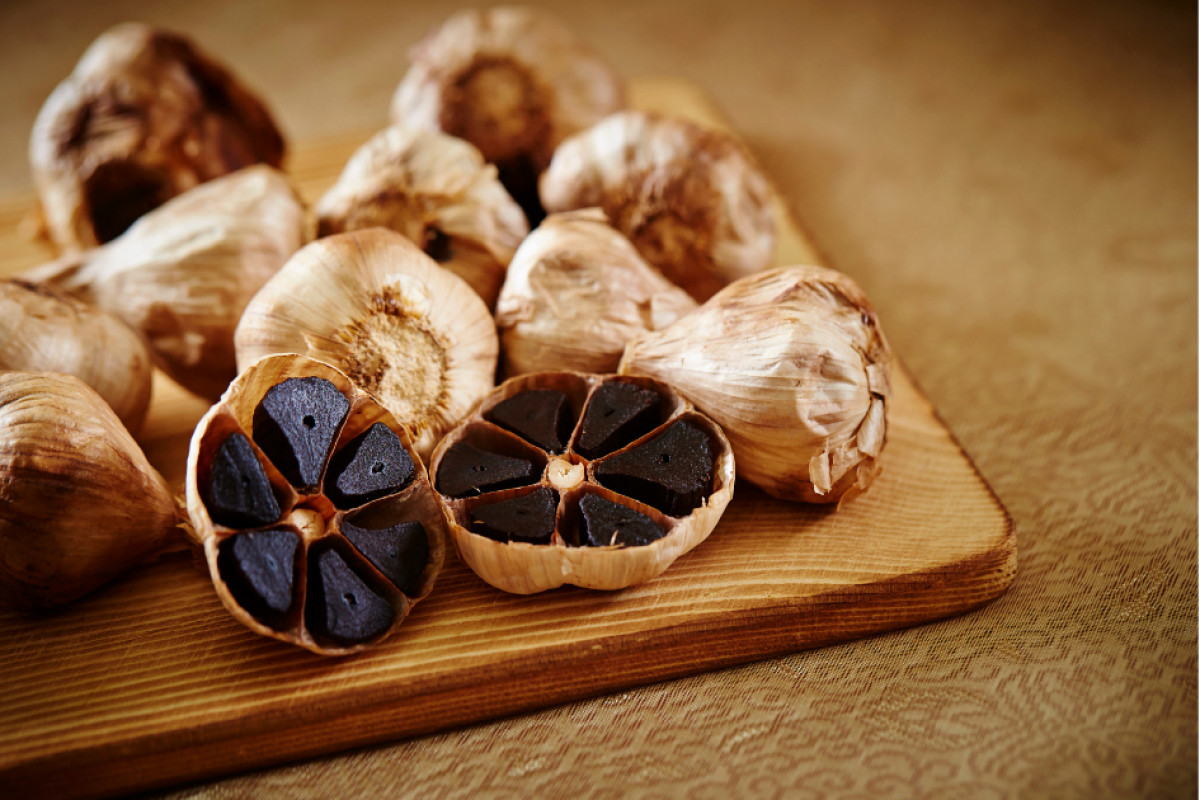From its sweet, mellow flavor to its sticky texture, black garlic has charmed food enthusiasts worldwide. But if you’re following a specific diet—like keto, paleo, or something else—you might be wondering how (or if) black garlic fits into your meal plan. Below, we’ll break down the nutritional aspects of black garlic, discuss how it aligns with popular diets, and provide tips on using it responsibly within dietary guidelines.
What Makes Black Garlic Unique?
-
Aged vs. Raw: Black garlic is created by aging fresh garlic at low heat and high humidity for several weeks. This process mellows the pungent sulfur compounds, giving cloves a sweet, almost balsamic flavor.
-
Lower Pungency, Higher Sweetness: Thanks to the Maillard reaction, black garlic ends up with a softened, caramel-like taste—some of its sharpness is gone, but its natural sugars are more pronounced.
-
Possible Health Perks: Rich in antioxidants, black garlic may offer certain wellness benefits—though more research is needed for definitive claims.
Nutritional Basics
Macronutrients
-
Carbohydrates: Black garlic does contain natural sugars. Depending on portion size, this could affect low-carb diets like keto.
-
Protein: Like raw garlic, black garlic isn’t a significant protein source.
-
Fats: Virtually no fat unless it’s part of a prepared product (like black garlic butter).
Micronutrients
-
Vitamins & Minerals: Black garlic retains some of the vitamins and minerals found in raw garlic, such as manganese, vitamin B6, and vitamin C (though the aging process may alter amounts).
-
Antioxidants: Studies suggest black garlic might have higher antioxidant levels than raw garlic.
Tip: The exact carb count can vary by brand or by homemade batches. Always check labels or use a nutrition calculator if precision is key.
Keto Diet
Key Considerations
-
Low-Carb Requirement: The keto diet typically restricts daily net carbs to about 20–50 grams.
-
Sweetness in Black Garlic: The Maillard reaction increases the detectable sweetness, but that doesn’t necessarily equal high carb content.
Is It Keto-Friendly?
-
In Moderation: If you’re using one or two cloves in a dish, it’s unlikely to derail your keto goals. Each clove contains minimal carbs—likely only a fraction of a gram.
-
Portion Control: The main risk is if you use large amounts, like a whole bulb for a recipe serving just one or two people.
-
Pairing Strategies: Combine black garlic with high-fat ingredients (like cream, cheese, or avocado) and proteins (meat, fish) to maintain your desired macro balance.
Verdict: Generally fine in moderation. Track your portion sizes, especially if you’re in a strict ketosis phase.
Paleo Diet
Key Considerations
-
Whole, Unprocessed Foods: Paleo focuses on foods presumed to be available to our Paleolithic ancestors—meats, fish, vegetables, fruits, nuts, seeds, and certain oils.
-
Avoided Foods: Grains, legumes, refined sugars, and most dairy products.
Is It Paleo-Friendly?
-
Naturally Occurring: Garlic is a plant, and aging it is not an overly processed method involving chemicals or refined additives.
-
Potential Health Benefits: Its antioxidant content and lack of refined sugar makes black garlic more aligned with Paleo principles.
Verdict: Yes, it typically fits well into a Paleo framework since it’s essentially a whole food, just aged.
Whole30
Key Considerations
-
No Added Sugars: The Whole30 diet bans added sweeteners, among other things, for a strict 30-day reset.
-
Label Reading: Store-bought black garlic often has no additives, but always double-check.
Is It Whole30-Compliant?
-
Natural Sugars vs. Added Sugars: The sweetness in black garlic comes from the natural breakdown of garlic’s own sugars, not from external sweeteners.
-
Approved: Pure black garlic with no extra ingredients generally meets Whole30 standards.
Verdict: Likely fine if it’s 100% garlic with no added sweeteners or oils.
Vegan & Vegetarian Diets
-
Plant-Based: Being simply aged garlic, black garlic is inherently vegan and vegetarian.
-
Versatile: Use it to boost umami in meatless dishes—from soups to sauces.
Tip: Combine black garlic with legumes, tofu, or mushrooms for a deeply flavorful plant-based meal.
General Tips for Using Black Garlic in Special Diets
-
Check Labels: If you’re buying packaged black garlic, look for added ingredients. Some brands might include extra oils or sweeteners.
-
Experiment Sparingly: Start with small amounts—both for flavor and to see how it affects your carb or sugar intake.
-
Balance Your Macros: If you’re concerned about carbs, pair black garlic with protein/fat-based ingredients. For a Paleo meal, stick to permitted foods and avoid dairy or grains.
-
Record-Keeping: If you’re on a strict diet (like keto), keep track of your daily macros. The carbs in a couple of cloves are likely minimal, but awareness is key.
Final Thoughts
Black garlic can fit neatly into many dietary frameworks—from keto and paleo to whole-foods approaches and vegan lifestyles. While it does contain some natural sugars, the quantity is typically small enough that, in moderate portions, it’s unlikely to disrupt your nutritional goals. More importantly, it offers a way to amplify flavor without resorting to refined sweeteners or processed additives.
Whether you’re seeking a low-carb lifestyle or aiming for clean, unprocessed foods, black garlic can be a powerful ally in your kitchen arsenal. As with any special diet, just remain mindful of portion sizes and the rest of your meal’s composition—and let black garlic’s sweet-savory magic shine.

Comments (0)
No comments yet. Be the first to comment!